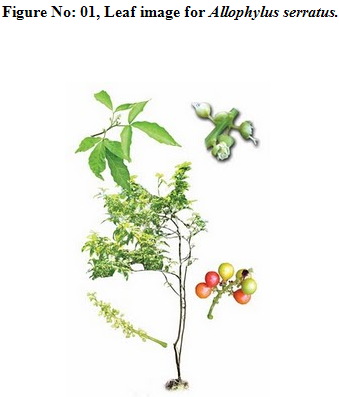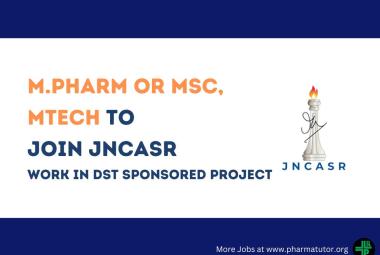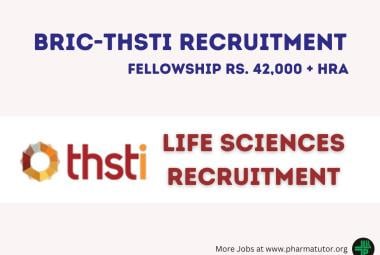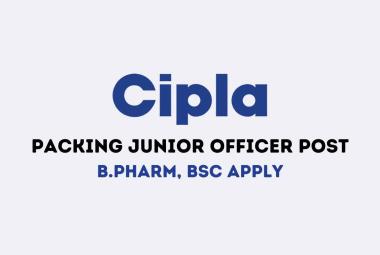About Authors:
 A. Srilakshmi, SK. Afsar, B. Priyanka, G. Jyothi Reddy, R.E.Amrutha, B.Jagadeesh babu, C. Raja ram
A. Srilakshmi, SK. Afsar, B. Priyanka, G. Jyothi Reddy, R.E.Amrutha, B.Jagadeesh babu, C. Raja ram
1. Department of Pharmacology,
P. Rami Reddy Memorial College of Pharmacy,
Kadapa, Andhra Pradesh, India.
ABSTRACT
ALLOPHYLUS SERRATUS is a medicinal plant used for the treatment of various risk factors like analgesia, inflammation, ulcers, and wounds. The aqueous extract of the leaf was investigated for its anti-inflammatory and analgesic activities in animal models. The extract at 100, 200 and 400mg/kg body weight reduced significantly the formation of oedema induced by formalin. In the acetic acid-induced writhing model, the extract had a good analgesic effect characterized by a reduction in the number of writhes when compared to the control. Similarly, the extract caused dose-dependent decrease of licking time and licking frequency in rats injected with 0.05ml of 10% formalin. These results were also comparable to those of ibuprofen, the reference drug used in this study. Acute toxicity test showed that the plant may be safe for pharmacological uses. This study has provided some justification for the folkloric use of the plant in several communities for conditions such as stomachache, pain and inflammations.
Reference Id: PHARMATUTOR-ART-1234
INTRODUCTION
 Inflammation and pain is a local response of living mammalian tissues to the injury. It is a body defense reaction in order to eliminate or limit the spread of injurious agents. There are various components to an inflammatory reaction that can contribute to the associated symptoms and tissue injury. Oedema formation, leukocyte infiltration and granuloma formation represent such components of inflammation (Mitchell and Cotran, 2000). Oedema formation in the paw is the result of a synergism between various inflammatory mediators that increase vascular permeability and/or the mediators that increase blood flow (Ialenti et al., 1995).
Inflammation and pain is a local response of living mammalian tissues to the injury. It is a body defense reaction in order to eliminate or limit the spread of injurious agents. There are various components to an inflammatory reaction that can contribute to the associated symptoms and tissue injury. Oedema formation, leukocyte infiltration and granuloma formation represent such components of inflammation (Mitchell and Cotran, 2000). Oedema formation in the paw is the result of a synergism between various inflammatory mediators that increase vascular permeability and/or the mediators that increase blood flow (Ialenti et al., 1995).
Drugs which are in use presently for the management of pain and inflammatory conditions are either narcotics e.g. opioids or non-narcotics e.g. salicylates and corticosteroids e.g. hydrocortisone. All of these drugs possess well known side and toxic effects. Moreover, synthetic drugs are very expensive to develop and whose cost of development ranges from 0.5 to 5 million dollars. On the contrary many medicines of plant origin had been used since long time without any adverse effects.
Therefore, a systematic approach should be made to find out the efficacy of plants against inflammation so as to exploit them as herbal anti-inflammatory agents.
Allophylus serratus (Roxb.) Kurz (Sapindaceae) is a large shrub which is widely distributed in South India and Assam hills.(P.K.Warrier, Nambiar., 1994).
The plant has a distinction of being used in Indian system of medicine (Ayurveda) as an anti-inflammatory and carminative drug, and has been used in elephantiasis, oedema, fracture of bones, several gastrointestinal disorders including dyspepsia, anorexia and diarrhoea (Gupta, A.K., Tandon, N., 2004) The fruits are sweet in taste and have cooling and nourishing tonic. In some part of Nigeria, the leaves and even roots are reported to be eaten to induce lactation. The root contain tannin and are considered astringent; they are stated to be used for treating piles and nose bleeding (Agrawal, V.S., 1997 ).The ethanolic extract of the plant exhibited activity against Ranikhet disease virus, and showed gross effects on central nervous system and hypothermia (Babbar, O.P., Joshi, M.N., Madan, A.R., 1982).
Yet, no systemic pharmacological studies were reported to support its use in inflammation and pain. Present study attempts to assess potential of Allophylus serratus in treating formalin induced inflammation and acetic acid induced writhing.
MATERIALS AND METHODS
Collection of Plant Material:
The leaves were collected from the talakona forest, Andhra pradesh, India during month of January 2011 and its identity as Allophylus serratus was cofirmed by Assistant professor in the department of botany, Sri Venkateswara University, Tirupati.
Preparation of extract:
Extraction was done by using soxhlet apparatus with 70% ethanol (hydro alcoholic) as solvent. The extracts were concentrated under reduced pressure dried and stored at 40C temp in air tight containers for further studies.
Phytochemical screening:
The ethanolic extract of A.Serratus was analyzed for preliminary phytochemical screening by using spray reagents: Liebermann–Burchard spray reagent (Briekskorn and Capuano, 1953) was used to detect the presence of steroids and pent acyclic triterpenes in the form of violet spots. Neutral ferric chloride was used to detect phenolic compounds that appear in the form of blue spots. Shinoda test (Shindo, 1928) and Fiegel’ test (Feigl, 1954) was used to detect flavonoids and glycoside, respectively. The extract was found to be devoid of alkaloids as detected by the DragonDroff’s reagent (Bollinger et al., 1965). Further isolation and characterization of pure compounds from the extract is in progress.
PHARMACOLOGICAL SCREENING
Animals used
Wistar rats of either sex, weighing 150 - 200 gm, were procured from the animal house of Venkateswara Enterprises, Banglore and Karnataka, India. Animals were kept in polypropylene cages and fed on standard laboratory diet (Lipton India Ltd) with water ad libitum, maintained at an ambient temperature of 26 ±20c. The ethical clearance was obtained by the Institutional Animal Ethics committee.
(Registration number1423/PO/a/11/CPCSEA/116/2011) before the experiment.
Chemicals:
Ibuprofen was obtained from Sigma-Aldrich, Bangalore. Formalin and Acetic acid were obtained from SD fine chemicals Ltd Mumbai. And all other reagents used were of analytical grade.
Instruments: Plethesmometer, and electronic balance (Shimadzu, Model no: DS-852 J).
Acute toxicity study
Wistar rats of either sex, weighing 150 - 200 g and of 90 days age were used to evaluate acute toxicity of the aqueous extract. Animals were then administered by oral route with aqueous extract(50 - 4000 mg / kg), suspended in 2% w/ v gum acacia solution (vehicle). Control group received only vehicle. The acute oral toxicity study was carried out as per the guidelines set by Organization for Economic Co-operation and Development (OECD), revised draft guidelines 423, received from Committee for the Purpose of Control and Supervision of Experiments on Animals (CPCSEA), Ministry of Social Justice and Empowerment, Government of India. The aqueous extract was found to be nontoxic up to dose of 4000 mg/kg body weight and hence 1/10 of this dose was taken as the screening dose.
Treatment schedule
As extract (100, 200, 400 mg/kg body weight) and standard anti-inflammatory and analgesic drug Ibuprofen (15 mg/kg body weight) (sigma-aldrich chemicals, bangalore) was prepared in 1% sodium carboxymethylcellulose (CMC) vehicle as suspension and administered orally. Animals were randomized into three groups, each carrying 6 rats.
1. Experimental group, treated with different doses of extract.
2. Experimental group treated with Ibuprofen.
3. Control group of animals that were treated with vehicle similar to experimental group.
Anti-inflammatory study:
In this experiment, formalin-induced rat hind paw oedema was used as the animal model of acute inflammation according to(Turner R, 1971). Briefly, acute inflammation was produced by sub-plantar injection of 0.05ml of 10% suspension of Formalin with 1% CMC in normal saline, in the right hind paw of the rats 1h after the oral administration of test materials. The paw volume was measured by plethysmometer at 1, 2, 3, and 4 h after the Formalin injection. The extract was administered at 100,200 and 400 mg/kg body weight. Ibuprofen 15 mg/kg body weight was used as standard anti-inflammatory agent.
Acetic acid induced writhing test:
The peripheral analgesic activity of leaf extract of Allophylus serratus was measured by the acetic acid induced writhing test as described earlier (Koster et al., 1959)briefly, the inhibition of writhing produced by the plant extract was determined by comparing with the inhibition produced by the control group. Ibuprofen at oral dose of 15 mg/kg was used as standard analgesic agent. Intraperitoneal injection of acetic acid (0.7%) at a dose of 0.1 ml/10g of body weight was used to create pain sensation. The number of writhings was calculated for 10 min, 10 min after the application of acetic acid.
NOW YOU CAN ALSO PUBLISH YOUR ARTICLE ONLINE.
SUBMIT YOUR ARTICLE/PROJECT AT articles@pharmatutor.org
Subscribe to Pharmatutor Alerts by Email
FIND OUT MORE ARTICLES AT OUR DATABASE
STATISTICAL ANALYSIS:
Data were analyzed by one-way ANOVA followed by Dunnet’s test and P value<0.0001 were considered statistically significant.
RESULTS &DISCUSSION
Acute toxicity:
Acute toxicity studies show that drug is safe up to the dose of 4000 mg/kg body weight. No mortality was observed at 14th day of the acute toxicity study.
Phytochemical Screening:
The ethanolic extract of Allophylus serratus was examined for the presence of various phytoconstituents by performing qualitative phytochemical tests and the results are recorded in table 1.
Anti-inflammatory activity:
Rats treated with Formalin (0.05ml of 10% suspension of Formalin with 1% CMC in normal saline) were significantly induced paw oedema. Oral doses of 100 mg/kg (T1), 200 mg/kg (T2) and 400 mg/kg (T3) of EAS (extract of Allophylus serratus) were showed significantly (p<0.0001) inhibited formalin induced paw oedema at 60, 120, and 180, 240 minutes when compared with control group. The dose of 400mg/kg was shown significant inhibition with equivalent to the standard drug Ibuprofen (15mg/kg). The results are recorded in table 2 and table 3.
Analgesic activity:
Intraperitoneal injection of acetic acid (0.7%) at a dose of 0.1 ml/10g of body weight was used to create pain sensation in rats. Oral doses of 100 mg/kg (T1), 200 mg/kg (T2) and 400 mg/kg (T3) of EAS (extract of Allophylus serratus) were showed significantly (p<0.0001) reduce the no of writhings in acetic acid induced writhing model at 60,120,180,240 minutes when compared with control group. The dose of 400mg/kg was shown significant inhibition with equivalent to the standard drug Ibuprofen (15mg/kg). The results are recorded in table 4.
Discussion:
The extract of Allophylus serratus was evaluated for its anti- inflammatory and analgesic activities. The effect of EAS at the dose of 100, 200 and 400 mg/kg showed significant anti-inflammatory and analgesic activity in acute models The dose of 400mg/kg was shown significant inhibition with equivalent to the standard drug Ibuprofen (15mg/kg).
Formalin-induced edema is characterized by the presence of PGs and other compounds of slow reaction. COX-2 is an inducible isoform found in activated inflammatory cells that generates prostanoid mediators of inflammation (D. A. Sawatzky et al., 2005,). Inhibition of COX-2 protein expression has also become the most popular target for screening anti-inflammatory agents and the study of pathogenesis and pathology of the inflammatory and nociceptive processes in animal models (F. Nantel, et al., 1999). TNF-α is a major mediator in inflammatory responses, inducing innate immune responses by activating T cells and macrophages and stimulating the secretion of other inflammatory cytokines . (Beutler and A.Cerami, 1989). As cytokines are critical to the pathogenesis of inflammatory disorders, inhibition of their production and action can provide therapeutic benefits. Previous studies have shown significant correlations among cytokine production, COX-2 protein expression and PG synthesis in the paw tissues of Rats in which edema was invoked by intraplantar injection of formalin, EAS at dosages of 0.1–0.4 g/kg significantly suppressed the protein expression of COX-2 level in the edema paw tissues of rats. The production of multiple pro inflammatory cytokines, such as TNF-α, in edema paw tissues of rats was also decreased by EAS treatment. These results suggest that EALS played a role in the anti-inflammatory activities in the model of Formalin-induced paw edema of Rats through the inhibition of TNF-α and COX-2 level.
CONCLUSION
Inflammation is a complex process characterized by swelling, redness, warmth (fever), and pain. It is the body's natural response to injury and plays an important role in healing and the fighting of infection. While essential for host defense and repair, the inflammatory response may has also been implicated in a myriad of disease including arthritis.
The extract of Allophylus serratus has shown anti-inflammatory activity with a significant decrease in Formalin induced paw oedema and also shown analgesic activity with significant reduces the number of writhings in Acetic acid induced writhing. Hence, the results obtained in this study proved the efficacy of extract of Allophylus serratusas anti-inflammatory and analgesic. The effect was observed to be dose dependent.
REFERENCES
1. P. K. Warrier, Nambiar: Indian Medicinal Plants. Orient Longman private Limited, Chennai, Volume1, 1994:99-100.
2. Gupta, A.K., Tandon, N., 2004. Reviews on Indian Medicinal Plants, vol.2. Indian Council of Medical Research, New Delhi, pp. 90–92.
3. Agrawal, V.S., 1997. Drug Plants of India. Kalyani Publishers, Ludhiana, India, p. 171.
4. Babbar, O.P., Joshi, M.N., Madan, A.R., 1982. Evaluation of plants for antiviral activity. Indian Journal of Medical Research 74, 54–65.
5. Briekskorn, C.H., Capuano, I., 1953. Der chemismus der farbreaktionen nach Liebermann und salkowski bei Triterpenen und sterinen. ChemischeBerichte 86, 866–873.
6. Shindo, J., 1928. Color reactions to flavone and flavonols derivatives and the like. Journal of Pharmaceutical Society 48, 214–220.
7. Feigl, F., 1954. Spot Test, Organic Applications, 5th ed. Elsevier, New York, p. 491.
8. Bollinger, H.R., Frenner, M., Ganshirt, H., Mangold, H.K., Stahl, E., Waldi, D., 1965. Spray reagents for thin layer chromatography. In: Egon, S. (Ed.), Thin Layer Chromatography: A Laboratory Handbook.Springer-Verlag, Academic Press, New York, p. 491.
9. Turner R, Screening Method in Pharmacology. Anti-Inflammatory agent, Academic Press New York, London, 1965, 13, 158Crunkhon P, Meacock S, Mediators of the inflammation induced in the rat paw by carrageenan. British Journal of Pharmacology, 42, 1971, 392-402.
10. Koster R, Anderson M, De Beer EJ (1959). Acetic acid for analgesic screening. Federation Proceedings. 18: p. 412.
11. D. A. Sawatzky, I. L. Megson, and A. G. Rossi, “Sildenafil offers protection against NSAID-induced gastric injury,” British Journal of Pharmacology, vol. 146, no. 4, pp. 477–478, 2005.
12. F. Nantel, D. Denis, R. Gordon et al., “Distribution and regulation of cyclooxygenase-2 in carrageenan-induced inflammation,” British Journal of Pharmacology, vol. 128, no. 4, pp. 853–859, 1999.
13. B. Beutler and A. Cerami, “The biology of cachectin/TNF—a primary mediator of the host response,” Annual Review of Immunology, vol. 7, pp. 625–655, 1989. (39)
TABLES AND FIGURES
Table no: 1 phytochemical screening of EAS
|
S.No |
Phyto chemical |
Ethanolic extract of Allophylus serratus |
|
1 |
Alkaloids |
- ve |
|
2 |
Catachols |
-ve |
|
3 |
Flavanoids |
+ ve |
|
4 |
Phenolic compounds |
+ ve |
|
5 |
Saponins |
- ve |
|
6 |
Steroids |
+ ve |
|
7 |
Tannins |
- ve |
|
8 |
Triterpinoids |
+ ve |
|
9 |
Glycosides |
+ ve |
Table no: 2Effect on paw diameter
|
S.No |
Groups |
0’min |
60min |
120min |
180min |
240min |
|
I |
Normal |
2.00±0.00 |
2.00±0.00 |
2.00±0.00 |
2.00±0.00 |
2.00±0.00 |
|
II |
Control |
2.15±0.028 |
4.05±0.064 |
4.45±0.028 |
4.225±0.047 |
3.70±0.040 |
|
III |
Standard |
2.2±0.040 |
2.675±0.047*** |
2.4±0.040*** |
2.25±0.028*** |
2.12±0.025*** |
|
IV |
Test-1 |
2.275±0.025 |
3.2±0.070*** |
3.225±0.075*** |
3.17±0.062*** |
3.0±0.040*** |
|
V |
Test-2 |
2.25±0.028 |
2.9±0.040*** |
2.675±0.085*** |
2.375±0.047*** |
2.2±0.040*** |
|
VI |
Test-3 |
2.2±0.040 |
2.775±0.085*** |
2.55±0.064*** |
2.325±0.025*** |
2.15±0.028*** |
The significant anti-inflammatory activity was shown at ***p<0.0001 vs. control each value expressed as mean±SE
Table no: 3 Effect on paw edema
|
S.No |
Groups |
0’min |
60min |
120min |
180min |
240min |
|
I |
Normal |
0.2±0.00 |
0.2±0.00 |
0.2±0.00 |
0.2±0.00 |
0.2±0.00 |
|
II |
Control |
0.225±0.025 |
o.70±0.040 |
0.875±0.025 |
0.75±0.028 |
0.65±0.028 |
|
III |
Standard |
0.25±0.028 |
0.50±0.040** |
0.425±0.025*** |
0.35±0.228*** |
0.275±0.025*** |
|
IV |
Test-1 |
0.275±0.025 |
0.75±0.028 |
0.75±0.028 |
0.575±0.047* |
0.475±0.047* |
|
V |
Test-2 |
0.25±0.028 |
0.625±0.025 |
0.60±0.040*** |
0.50±0.040** |
0.40±0.040** |
|
VI |
Test-3 |
0.225±0.025 |
0.60±0.040 |
0.50±0.040*** |
0.40±0.040*** |
0.30±0.040*** |
The significant anti-inflammatory activity was shown at ***p<0.0001 vs. control each value expressed as mean±SE
Table no: 4 Effect of Allophyllus serratus and Ibuprofen on percent inhibition of acetic acid induced writhings.
|
S.NO |
Groups |
Writhings mean±S.E |
%Inhibition |
|
1. |
Control |
41.50±0.6455 |
|
|
2. |
Ibuprofen (15mg/kg) |
12.50±0.6455*** |
72.89% |
|
3. |
A.serratus(100mg/kg) |
26.25±0.6292*** |
34.33% |
|
4. |
A.serratus(200mg/kg) |
22.25±0.4787*** |
45.78% |
|
5. |
A.serratus(400mg/kg) |
13.50±0.6455*** |
69.87% |
The significant Analgesic activity was shown at ***p<0.0001 vs. control each value expressed as mean±SE
NOW YOU CAN ALSO PUBLISH YOUR ARTICLE ONLINE.
SUBMIT YOUR ARTICLE/PROJECT AT articles@pharmatutor.org
Subscribe to Pharmatutor Alerts by Email
FIND OUT MORE ARTICLES AT OUR DATABASE










.png)


